Intelligent Customer Service: Standard vs. Dedicated Allocation
Discover how ByteTrack's conversation allocation optimizes customer interactions, enhances brand image, and boosts business outcomes.

With the rapid development of the internet, online customer service has become increasingly important in our daily lives. The growing demand for customer service has led to the rise of various customer service systems to meet the diverse needs of businesses. As a core product, intelligent customer service offers a wide range of features, but only those that are well-refined can truly deliver practical value. This article will delve into one of the key features of intelligent customer service—conversation allocation.
1. Why Should Intelligent Customer Service Classify Conversations?
Different businesses have different customer service needs, which can be broadly categorized into two models: one where a single customer service group handles both pre-sales and post-sales on a single platform, and another where different business areas are separated, commonly used in e-commerce platforms to create individual conversation environments for each store, preventing information mix-ups between different vendors. Therefore, conversation classification offers the following advantages:
Clear Business Ownership: By creating separate entry points for different business areas, not only is the customer service process optimized, but customer service representatives can also focus on resolving issues within a specific domain, thereby improving work efficiency.
Handling Complex Scenarios: Businesses may require customized services depending on different scenarios. For example, when dealing with customers who speak different languages, the customer service interface needs to be multilingual to enhance the customer experience.
By classifying conversations to meet the diverse needs of customers, intelligent customer service can truly demonstrate its value, and the effectiveness of customer service can be improved. Next, we will use ByteTrack as an example to showcase the effects of conversation allocation based on application scenarios and real-world experiences.
2. Standard Allocation Enhances Brand Image
When customers want to learn more about a product or company, a strong brand image can leave a lasting first impression. Therefore, ByteTrack has set the official customer service entry point as a standard allocation mode, where customer service representatives can communicate internally. The elegant interface and rich cultural elements greatly contribute to building a positive brand image.
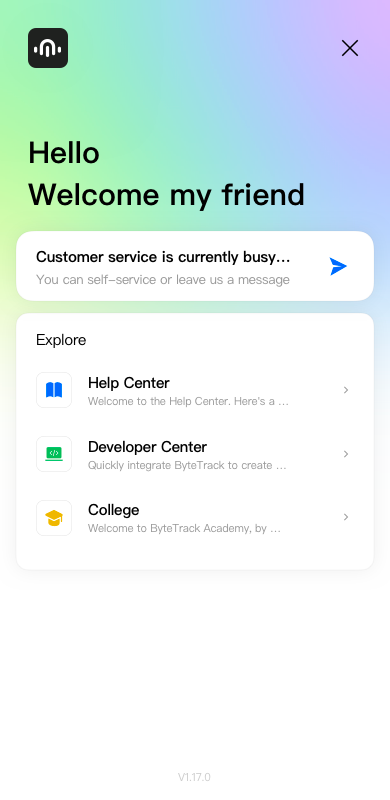
Welcome Message and Project Introduction: When customers click on the customer service icon, the first thing they see is a prominent welcome message and project introduction, which can be customized to reflect the company's unique cultural atmosphere through different language styles.
Company Logo Display: The well-organized display of the company logo further reinforces customers' brand recognition, highlighting the company’s image.
Company Wiki Site: Displaying the company's Wiki site guides customers to find the information they need on their own, which not only reduces the workload of customer service representatives but also shortens customers' waiting time. The extensive knowledge system helps to deeply embed the company's cultural image in customers' minds.
3. Unique Customer Service Skills - Dedicated Allocation
When handling customer feedback, ByteTrack understands the urgency of customers. Therefore, when customers click on the dedicated allocation icon, they are taken directly to a conversation with a customer service representative.
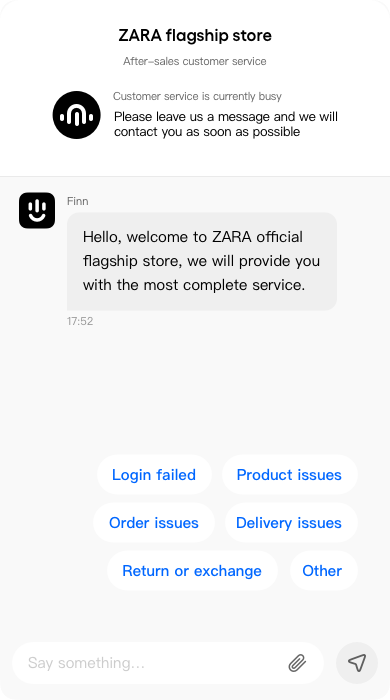
Upon entering the conversation page, the current business scenario will be identified with field markers. For example, on an e-commerce platform, the following scenarios can be set: when a customer inquires about logistics-related issues on the logistics page, they are directly connected to the customer service representative responsible for logistics through dedicated allocation; when a customer initiates communication on the product purchase page, the pre-sales representative can address customer concerns based on previous inquiries, thereby increasing conversion rates; when a customer contacts after-sales service after receiving a product, the after-sales representative can help quickly resolve issues, enhancing customer trust and repeat purchase rates.
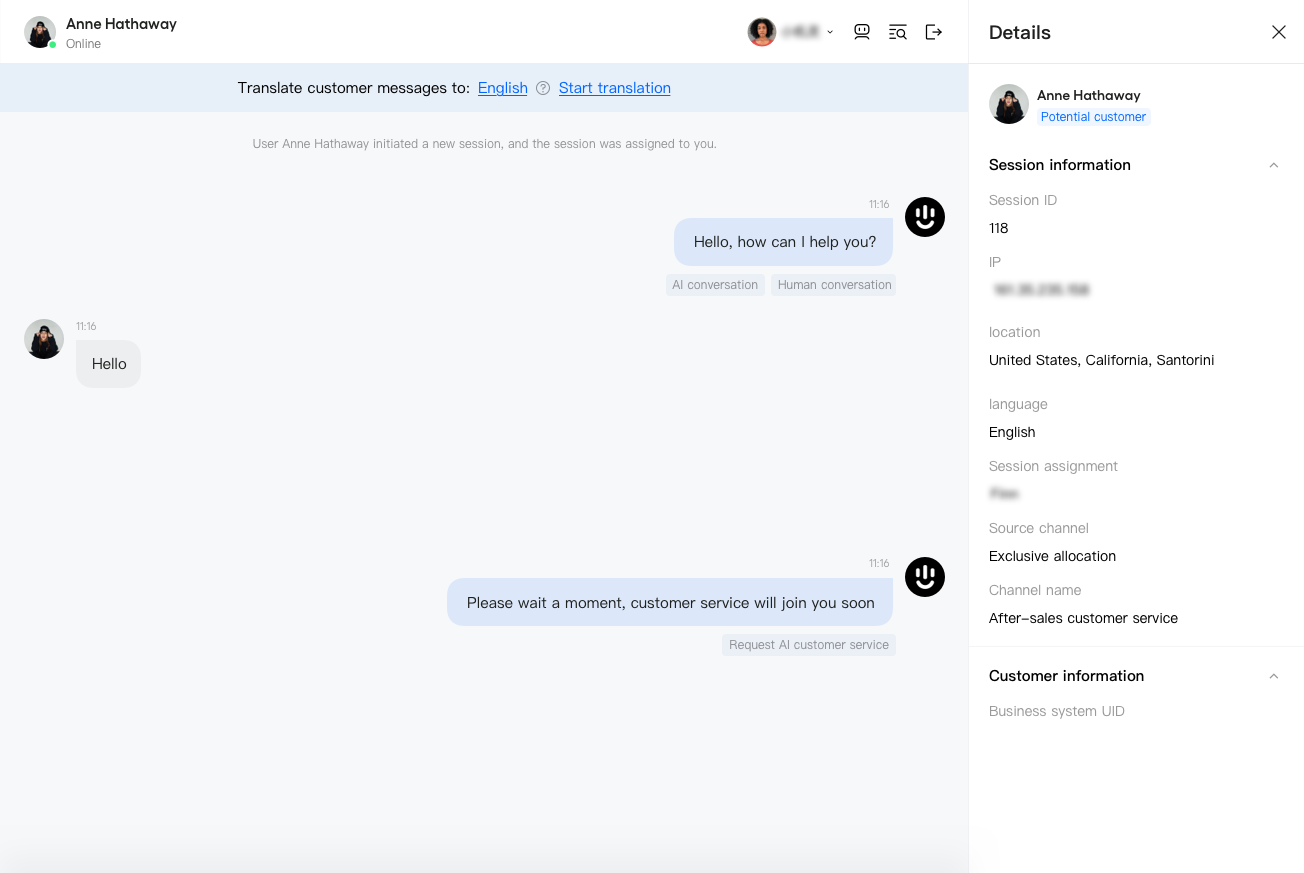
More application scenarios can be easily configured in the backend, with specific customer service representatives assigned to different scenarios, reducing the likelihood of customer service representatives being unfamiliar with certain scenarios.
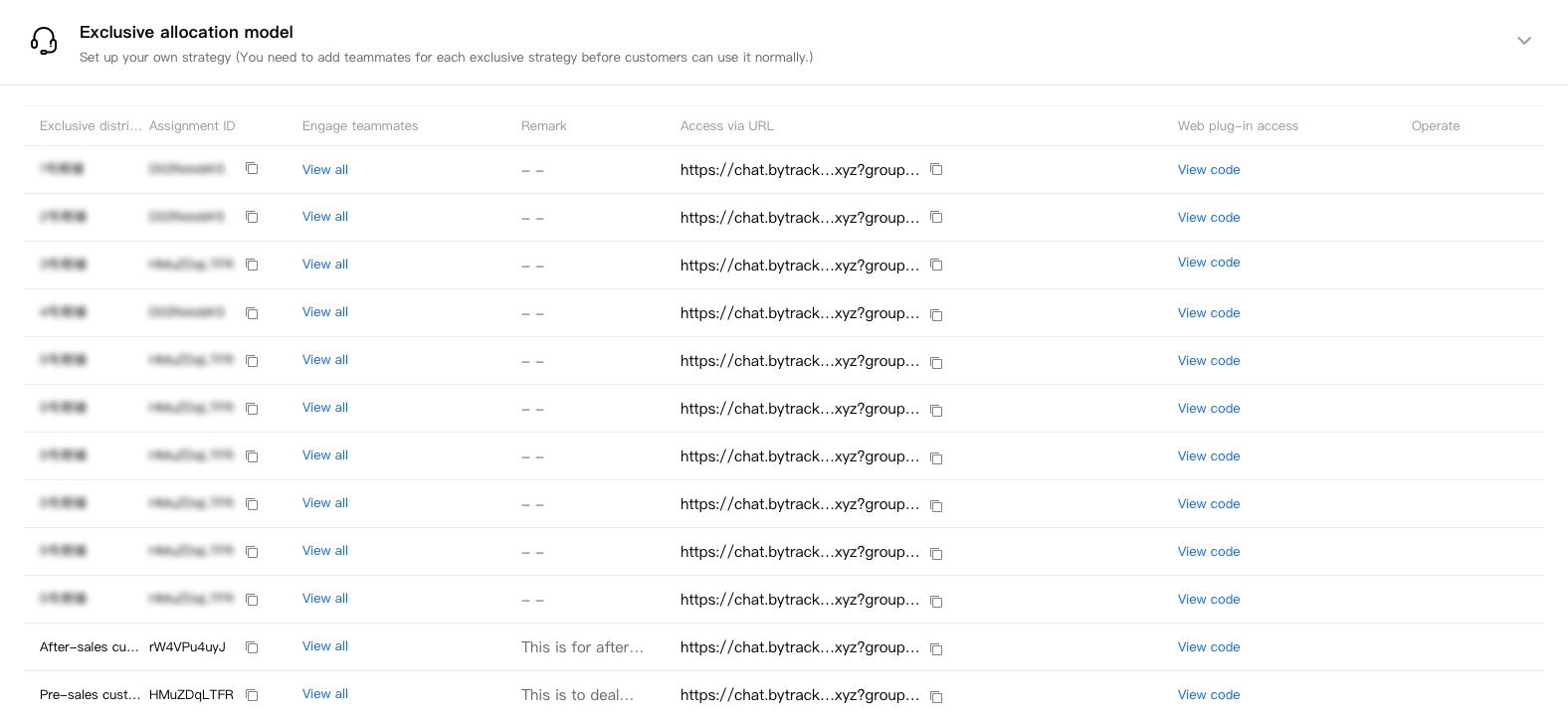
4. Combining Both to Boost Business Growth
The two allocation modes mentioned above can be freely chosen based on the business needs of the company. In some industries, the combination of both can deliver greater results. For instance, in the cross-border e-commerce industry, companies usually have clear internal divisions, and their shopping platforms often offer multiple language versions, each requiring its own customer service group. The platform's homepage can use standard allocation to connect customers based on their current language, while dedicated allocation can be used in the following scenarios: after-sales service contact entry on the order details page, logistics contact entry, and pre-sales service contact entry on the product details page.
Moreover, to maximize the effectiveness of conversation allocation, companies need to have a good understanding of ByteTrack's other intelligent customer service products. For example, for customers speaking different languages, the corresponding language version can be pre-configured on the Messenger page, using different language versions based on business scenarios to provide personalized care.
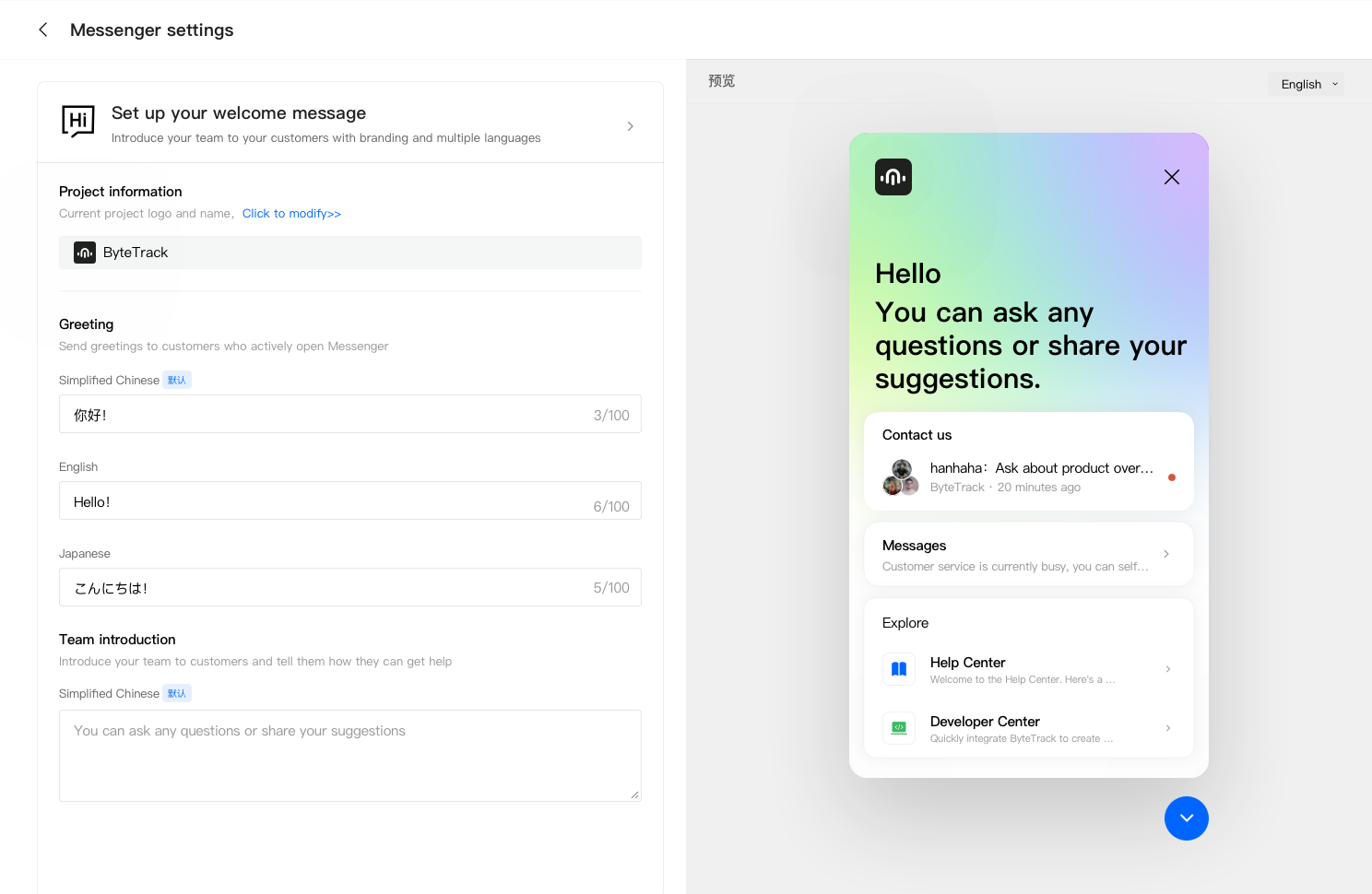
5. Conclusion
As a key feature of intelligent customer service systems, conversation allocation—through the effective combination of standard and dedicated allocation—can significantly enhance brand image, increase customer satisfaction, and drive business growth. The standard allocation mode helps companies establish a strong brand presence in customers' minds, while the dedicated allocation mode improves the efficiency of problem resolution and customer satisfaction. By flexibly utilizing these two allocation modes in conjunction with other intelligent customer service features, companies can gain a competitive edge in the market and continuously improve customer experience and loyalty.














One-stop solution, providing comprehensive support for business operations
ByteTrack,create a one-stop AI-based intelligent operational collaboration platform for you
- Resource
- ByteTrack academy
- Help center
- Developer center
- Contact us
-
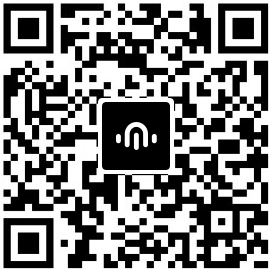 WeChat Official Account
WeChat Official Account Business WeChat ID
Business WeChat ID


 share
share


